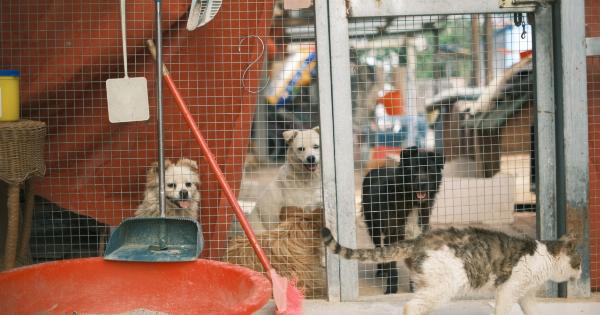Neutering and spaying are two types of surgical procedures performed on pets to prevent them from reproducing. While there are advantages and disadvantages to this procedure, it remains an important part of responsible pet ownership.
Advantages of Neutering and Spaying
There are several advantages to neutering or spaying your pet. Some of the most significant benefits include:.
1. Reduced Risk of Certain Cancers
Neutering or spaying your pet can prevent certain types of cancers such as ovarian, uterine, and testicular. Pets that are not spayed or neutered have a higher chance of developing cancerous cells in their reproductive organs.
2. Prevent Unwanted Litters
Neutering and spaying help control pet population by preventing unwanted litters. Millions of cats and dogs end up in shelters each year because there are not enough homes for them.
By neutering or spaying your pet, you can help reduce the number of animals that end up in shelters and, in turn, improve their quality of life.
3. Improved Behavior
Neutered and spayed pets are calmer and less aggressive than their unaltered counterparts. They are less likely to engage in behaviors like territorial marking and fighting over mates.
Neutered male dogs, for example, are less likely to roam, which reduces the risk of them getting hit by a car.
4. Longer Lifespan
Neutered and spayed pets tend to live longer than their unaltered counterparts. This is because they are not at risk for certain health problems such as reproductive cancers or infections.
Disadvantages of Neutering and Spaying
While there are several advantages to neutering and spaying, there are also some disadvantages to consider.
1. Surgery Risks
Like any surgery, there is always a risk of complications. Your pet may experience side effects like bleeding or infection after the procedure. While most pets recover without incident, some may require additional veterinary care.
2. Expense
Neutering and spaying can be expensive, particularly for larger pets. You will need to pay for the procedure itself, as well as any pre-operative testing, anesthesia, and post-operative care.
While some animal shelters offer low-cost or free neutering and spaying, these programs may not be available in all areas.
3. Hormone-Related Changes
After neutering or spaying, your pet’s hormone levels may change. This could result in changes in behavior, appetite, and energy level. For example, some dogs may become less active or gain weight after neutering.
Additionally, pets that are spayed may be at a higher risk for certain health problems like hypothyroidism.
Conclusion
While there are advantages and disadvantages to neutering and spaying, most pet owners agree that the benefits outweigh the risks.
If you are considering this procedure for your pet, it is important to discuss your options with your veterinarian to determine what is best for your pet’s health and well-being.






























